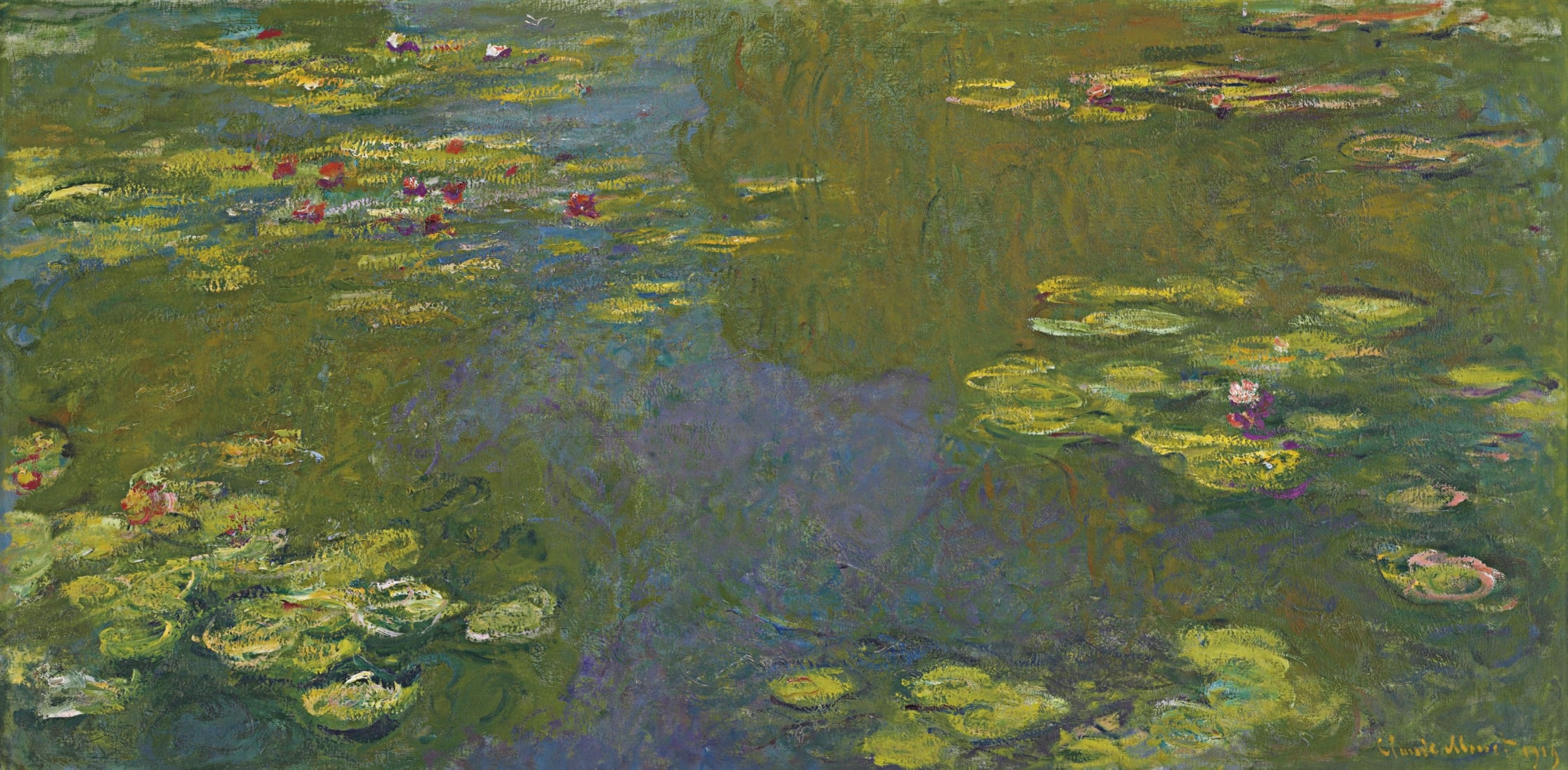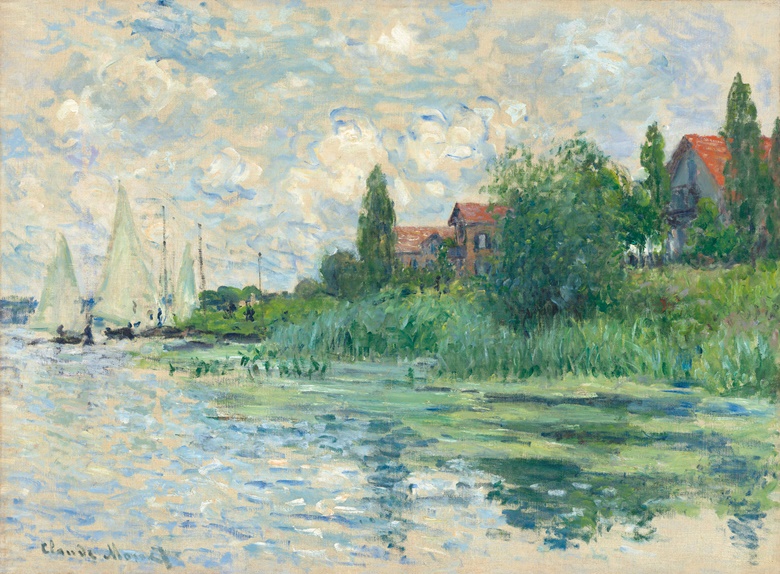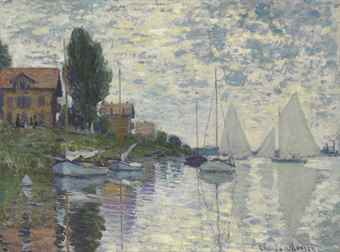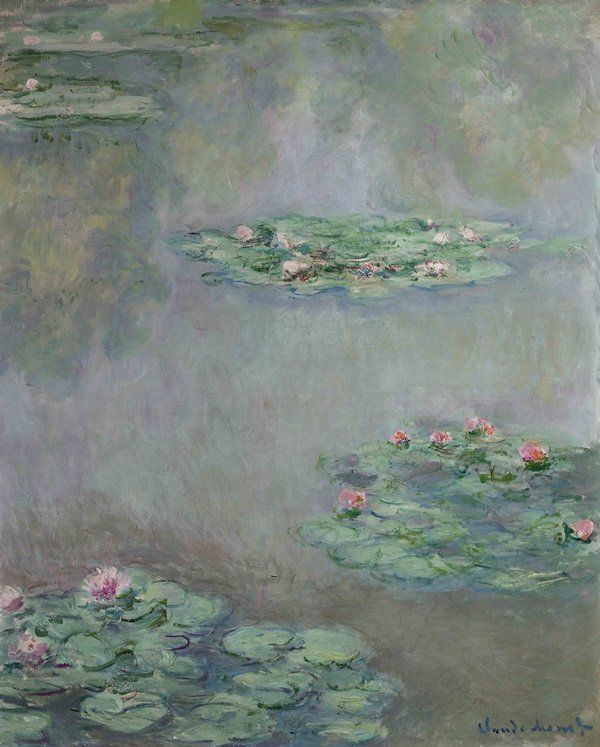Also see Monet at Auction and Monet at Auction II
Claude Monet, Meules. Oil on canvas. Executed in 1890, signed and dated by the artist in 1891. Estimate in excess of $55 million. |
Sotheby’s announced that an enduring symbol of Impressionism from Claude Monet’s iconic Haystacks series will lead an important private collection of eight Impressionist masterworks on offer in our Evening Sale of Impressionist & Modern Art on 14 May in New York.
Of the 25 canvases that the artist created in the early 1890s, Meules from 1890 is one of only four works from this series to come to auction this century and one of only eight remaining in private hands. The other 17 examples reside in the distinguished collections of The Metropolitan Museum of Art, New York, the Musée d’Orsay, Paris and, perhaps most notably, six in the collection of the Art Institute of Chicago. Meules is further distinguished by its illustrious provenance, having been acquired by wealthy Chicago socialites and fervent collectors of Impressionist works, Mr. and Mrs. Potter Palmer, directly from the artist’s dealer in the 1890s.Having remained in the same private collection since it was acquired by the present owners at auction in 1986, the radiant canvas will be offered this May with an estimate in excess of $55 million.
Meules belongs to a group of eight outstanding works by Impressionist masters on offer this May from the same important private collection, including defining examples by Pierre Bonnard, Édouard Manet, Camille Pissarro, Pierre-Auguste Renoir, Paul Signac, Alfred Sisley and Édouard Vuillard. A portion of the proceeds from the sale of the collection will significantly benefit two world-renowned, not-for-profit institutions in the fields of science and music.
This exquisite group of works will debut in a public exhibition beginning 3 May in Sotheby’s newly reimagined and expanded York Avenue galleries. This exhibition marks the first public viewing of Meules in over three decades.
August Uribe, Head of Sotheby’s Impressionist & Modern Art Department in New York, commented: “It is a privilege to present one of Claude Monet’s defining Impressionist paintings in our Evening Sale this May. One of the most recognizable images in art history, Monet’s Haystacks series has long served as an inspiration to countless artists since its creation in the early 1890s, and continues to inspire anyone who has viewed one of these canvases first hand. Prior to 2016, a Haystack had not been presented to collectors since Sotheby’s London offered a work from the series in June 2001, nearly 20 years ago. In addition, the seven pictures that round out this collection are exceptional in their own right, and the group as a whole is among the finest assemblages of Impressionist works that we have seen in recent years. Anytime a work, such as Meules, that has been so formative in the canon of art history comes to auction there is a palpable energy that ricochets through the market. It is with this immense enthusiasm that we look forward to presenting this wonderful group to collectors worldwide this May.”
Brooke Lampley, Vice Chairman of Sotheby’s Fine Art Division, said: “It was in 1890 with the Haystacks that Monet first began an intrepid exploration of the varying effects of light and atmosphere on a single subject over the course of time. It is these “series” pictures of haystacks, the Rouen Cathedral, and water lilies in Giverny that would eventually come to define his immense contribution to not only Impressionism, but also Abstraction and 20th century art. Now the most celebrated works of Monet's oeuvre, the series pictures are sought after by Impressionist and Contemporary collectors alike. It is a thrill to be offering a Meule that is not only distinguished among those remaining in private hands, but also easily ranks among the best in the entire series. This is a painting that showcases Claude Monet as an unparalleled landscape painter, and a radically innovative conceptual artist who would influence generations of artists to come.”
CLAUDE MONET’S MEULES
Painted at the height of Claude Monet’s artistic powers, Meules stands as a seminal work of Impressionism.
Executed in 1890 and signed and dated by the artist in 1891, Meules was acquired in the early 1890s by Mr. and Mrs. Potter Palmer directly from the artist’s dealer, Paul Durand-Ruel. Bertha Palmer, a celebrated Chicago socialite and the wife of well-known businessman Potter Palmer, amassed an unrivaled collection of Impressionist works, many of which are now the bedrock of the Art Institute of Chicago’s renowned Impressionist collection. Palmer acquired a large portion of the collection between 1891 and 1892 while traveling abroad to help organize the World’s Columbian Exposition, where she served as President of the Board of Lady Managers and advocated for women’s equality. The Palmers were introduced to Durand-Ruel in 1889 through curator Sarah Tyson Hallowell, who later introduced them to the artist Mary Cassatt. It is estimated that Mrs. Palmer owned nearly 90 works by Monet over the course of her life, and built a sprawling picture gallery, complete with red velvet walls, in her home to display her collection of Romantic, Barbizon and Impressionist works. Palmer owned six of Monet’s grainstack canvases, all purchased following the artist’s exhibition at Galerie Durand-Ruel in Paris in 1891. While the Palmers sold many of the pictures shortly after their acquisition, the present work remained in Mrs. Palmer’s personal collection until her death in May 1918 and with her heirs for decades after.
Monet began working on the group of paintings that are almost universally known as Haystacks as early as 1884, depicting stacks that were subsumed into a wider environment. However, the major series of majestic canvases depicting grainstacks, with a focus on the evanescent effects of light, were completed between 1889 and 1891. The stacks upon which Monet lavished so much of his energy and vision during those years were actually the stores for wheat and grain, and not for hay as is the popular misconception.
The stacks in the present composition are distinguished from other depictions in the series by the diagonal swaths of light between the forms. Voluminous, full structures, the stacks suggest the great fertility and bountifulness of the Normandy landscape, their surfaces gilded and burnished with the light of the sun, imparting a sense of well-being, vitality and the harmony of nature throughout the canvas. In choosing these powerful grainstacks as his subject, Monet continued a long tradition of depicting the French countryside and its abundant riches as seen in the paintings of Jean-François Millet and the Barbizon school. However, Monet updates this tradition to striking effect. His grainstacks series contains virtually no anecdotal detail: no laborers, no figures walking through the fields or birds flying in the sky. The artist pares down his vision to focus solely on the grainstacks themselves, on the play of light on them, on the sky and the horizon. In its warmth and generosity of vision, in its elevation of the humble grainstack to an emblem of Impressionism, and in its emphasis on form and light, Meules is an undisputed masterpiece of Monet’s oeuvre and one of art history’s most evocative images.

Claude Monet, Le Palais Ducal, oil on canvas, 1908 (est. £20,000,000-30,000,000)
Helena Newman, Worldwide Head of Sotheby’s Impressionist & Modern Art Department & Chairman of Sotheby’s Europe, said:
‘This spellbinding painting is a true masterpiece and among the very greatest Monet painted during his first and only encounter with Venice. Having remained in the same family collection since 1925, it presents a rare opportunity for collectors from all over the world to acquire a painting of this quality that is completely fresh to the market.’ Claude Monet arrived in Venice on 1 October 1908 – and, taken aback by the splendour of what he saw, the artist declared the city‘too beautiful to paint’.
Enchanted by the city, Monet painted just under forty canvases during the course of his three month stay, the greater part of which adorn the walls of museums across the globe. This spectacular painting depicts the historic Gothic façade of the Doge’s palace, and it belongs to a celebrated group of three works painted from the vantage of a boat moored along the canal, one of which is held in the collection of the Brooklyn Museum in New York.
Almost a century later, this painting will now appear at auction for the first time, with an estimate of £20,000,000 – 30,000,000, as part of Sotheby’s Impressionist & Modern Art Evening Sale on 26 February 2018. The painting was exhibited earlier this year – its first public appearance in almost four decades – alongside its counterpart from the Brooklyn Museum, in a room dedicated to the Venice series in the National Gallery in London’s acclaimed Monet and Architecture show, which toured through Monet’s ground-breaking depictions of the modern world in which he lived.
The composition is harmoniously divided between the palace’s brick exterior, and its reflection in the water. Monet animates the lagoon with wonderfully dappled brushstrokes whilst also bringing to life the façade of the building, which is softly diffused by light. The unique lacustrine quality of Venice and its architectural heritage allowed Monet to explore more abstract compositions, accentuating the interplay between the rhythms of the architecture and the expanse of water.
In Venice, Monet turned to his artistic forbears JMW Turner and James Abbott McNeill Whistler, for both of whom the city had held a special importance. Turner presented a Venice transfigured by light, and viewing their poetic paintings side by side, Henri Matisse once remarked that ‘it seemed to [him] that Turner must have been the link between the academic tradition and impressionism’. Unapologetically modern in its outlook and in the way that it is painted, the work is not a topographical view so much as it is an evocation of atmosphere. Venice proved the perfect subject for Monet to explore his apotheosis of painting.

Leading the collection is Claude Monet’s L’escalier à Vétheuil, 1881 ($12-18 million) – pictured left. With its extraordinary profusion of flowers and foliage, this sun-drenched canvas captures the splendor of high summer in Monet’s garden at Vétheuil, a rural hamlet that the artist called home from 1878 until 1881. The staircase at the center of the canvas acts as the compositional anchor for a series of four closely related views of the house and garden, which Monet created during the height of the summer sunshine.
The present L’escalier à Vétheuil was most likely the first in the series to be created, its close-up view of the unpopulated steps suggesting that the artist set his easel on the upper terrace to capture the view. The decorative quality of the Vétheuil garden scenes very clearly appealed to the contemporary market. Monet sold all three of the plein air canvases within a year or two of their execution, retaining only the National Gallery studio variant for himself. The first owner of the present version was the Pennsylvania Railroad tycoon Alexander Cassatt, the brother of Impressionist painter Mary Cassatt and a pioneering American collector of the New Painting; the canvas entered his collection around 1883, when Monet’s work was still little known across the Atlantic. In the spring of the same year, Monet and his extended family moved downriver to Giverny, where the artist’s garden as a subject for modern painting would eventually reach its apogee. L’escalier à Vétheuil is the last of the four from the series remaining in private hands: one version hangs in the National Gallery in Washington; D.C., another is in the Norton Simon Museum in Pasadena; and the third was bequeathed by the legendary California businessman, philanthropist and collector, A. Jerrold Perenchio, to the Los Angeles County Museum of Art in 2014.
On 11 November, Le bassin aux nymphéas will be offered in the Impressionist & Modern Art Evening Sale at Christie’s in New York.

Claude Monet's (1840-1926), Le bassin aux nymphéas, 1917-19. Oil on canvas. 39 3/4 x 79 in (100.7 x 200.8 cm) Estimate: $30,000,000-50,000,000.
On 24 June 2008 Le Bassin Aux Nymphéas, sold for almost £41 million at Christie's in London, almost double the estimate of £18 to £24 million.
I do not have long to live, and I must dedicate all my time to painting,’ wrote Claude Monet in a 1918 letter to the Parisian art dealer, Georges Bernheim. ‘I don’t want to believe that I would ever be obliged to leave Giverny; I’d rather die here in the middle of what I have done.’
Monet would survive these words by a number of years, but they reflect his precarious state of mind in the summer when he was working on Le Bassin aux nymphéas. He was approaching 80 — well beyond the life expectancy for men of his generation — and suffering increasingly with cataracts in both eyes. The First World War was also entering its final phase, the Germans recently having launched their Ludendorff Offensive on the Western Front: a last-ditch effort at victory before newly-arriving US troops could be fully deployed on the Allied side.The Germans’ advance was swift and effective, with Paris now within reach of their long-range guns. As, just about, was the village of Giverny, located slightly to the west of the French capital and a place Monet had called home since 1883.
Monet was an avid gardener, and much of his time at Giverny was spent in his sizeable garden. Peonies and red geraniums jostled for attention with pansies and yellow roses. His most famous horticultural feat, though, was creating a water garden, complete with a lily-covered pond, which, over the decades, he’d paint around 250 times.
By the turn of the 20th century, the pond became the almost-exclusive subject of Monet’s art, inspiring an outpouring of creativity that, for many, marks the summit of his career. A 1909 exhibition of 48 of his water-lily paintings, at Galerie Durand-Ruel in Paris, left art critics purring at how close to abstraction they looked. ‘His vision is increasingly limiting itself to the minimum of tangible realities, in order… to magnify the impression of the imponderable,’ wrote Jean Morgan in daily newspaper, Le Gaulois.
Monet wasn’t an artist to rest on his laurels or repeat past successes, however, and in 1918 he ordered a set of 20 large canvases in elongated, horizontal format (roughly a metre high by more than two metres wide). He duly began work on a new, compositionally connected group of paintings, where lily pads are clustered towards the lateral edges and a burst of sunlight makes its way in a vertical band down the centre, before spilling out into a broad pool at the bottom.
He’d complete 14 works of this type, Le Bassin aux nymphéas among them. In that particular painting, he unified the scene’s elements by adopting a diaphanous veil of colour all over, laid down with a light, transparent touch.
Monet wasn’t an artist to rest on his laurels or repeat past successes, however, and in 1918 he ordered a set of 20 large canvases in elongated, horizontal format (roughly a metre high by more than two metres wide). He duly began work on a new, compositionally connected group of paintings, where lily pads are clustered towards the lateral edges and a burst of sunlight makes its way in a vertical band down the centre, before spilling out into a broad pool at the bottom.
He’d complete 14 works of this type, Le Bassin aux nymphéas among them. In that particular painting, he unified the scene’s elements by adopting a diaphanous veil of colour all over, laid down with a light, transparent touch.
‘Monet saw the canvases as forerunners... of his late, water-lily Grandes Décorations’ — Paul Hayes Tucker, curatorFor Paul Hayes Tucker, the curator of a number of exhibitions on the French master, including Monet in the 20th Century at the Museum of Fine Arts, Boston, and Royal Academy of Arts, London, in the late 1990s, ‘this [suite of] canvases has a physical and emotional expansiveness’ that earlier water-lily paintings lacked.
Work on them proceeded rapidly, and in August 1918 Monet invited the dealer René Gimpel to Giverny for a private viewing. An enthused Gimpel remarked that ‘it was as though [he] were present at one of the first hours of the birth of the world.’ He saw neither horizon nor shore, being thrown into the midst of a seemingly limitless scene ‘without beginning or end.’
Twelve of the 14 paintings are extant today, the most recent example to appear on the market — another Le Bassin aux nymphéas — fetching £40.9 million ($80.4 million) at auction in 2008, which at the time represented a new world auction record for the artist.
According to Tucker, there’s a final reason the 14 works are important: the likelihood that ‘Monet saw the canvases as forerunners... of his late, water-lily Grandes Décorations’. Monet completed this ensemble of 22 mural-sized paintings shortly before his death in 1926 and donated them to the French state. Totalling more than 90 metres in length, they boast the same elongated, horizontal format as Le Bassin aux nymphéas (albeit on a larger scale) and are displayed, as per the artist’s wishes, like a panoramic frieze, wrapped around a circular room.
 | ||||||||
|
and two masterpieces by Claude Monet:
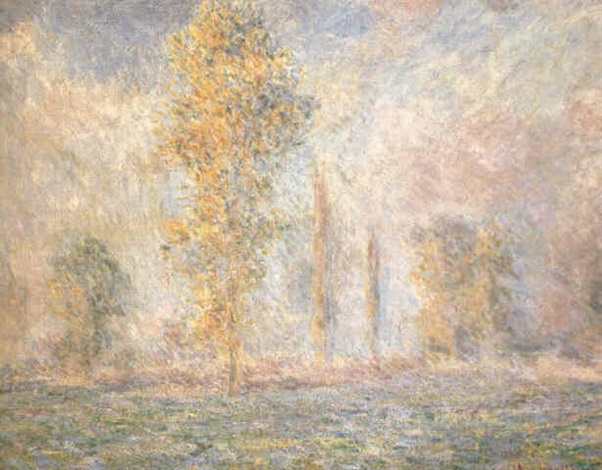
Prairie à Giverny (1885, estimate: £7,000,000 - 10,000,000)

and Pivoines (Peonies) (1887, estimate: £3,500,000 - 5,500,000).
The Triton Collection Foundation Claude Monet’s Vétheuil (1879, estimate: £4,000,000 - 6,000,000 ) is being offered from the Triton Collection Foundation , whose extensive loan programme to over seventy museums globally has made public access a top priority . It dates from one of the most crucial turning points of Monet’s career , where Monet embraced the landscape in its purest form, captu ring the ephemeral effects of light and atmosphere to create what many consider to be some of the finest works of his career.
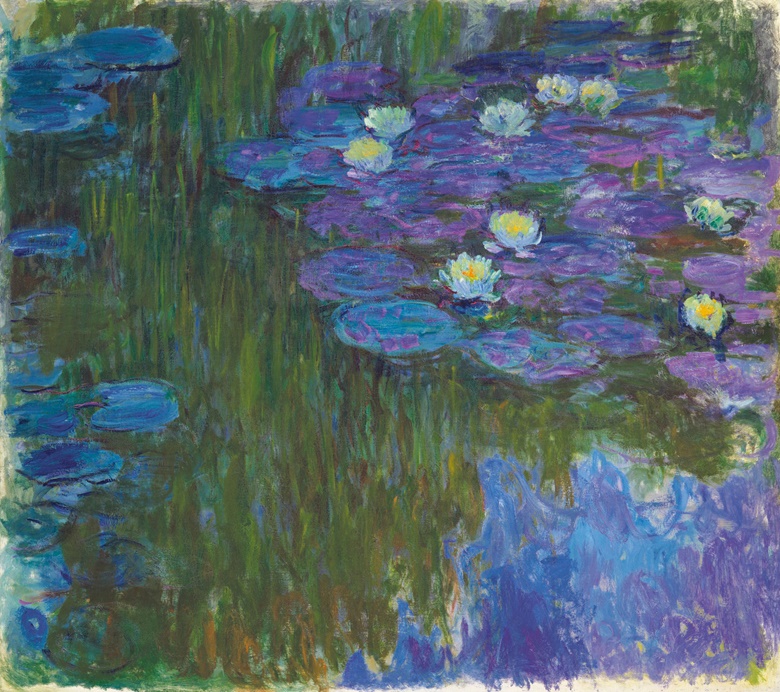
Monet’s beloved garden of Giverny was a source of unending inspiration. Nymphéas en fleur is among the largest scale, most brilliantly colored, and vigorously worked canvases that the artist executed – a glorious tribute to the natural world (estimate in the region of $35 million). This work belongs to a group of paintings Monet painted in a burst of untrammeled creativity between 1914 and 1917, as Europe plunged into the chaos of war. Upon the recommendation of Alfred Barr, the first director of the Museum of Modern Art, Peggy and David Rockefeller visited the Parisian dealer Katia Granoff and purchased the present painting in 1956. “One, which was almost certainly painted in the late afternoon and in which the water is a dark purple and the lilies stand out a glowing white, we bought immediately,” David Rockefeller recalled in Memoirs.
MPRESSIONIST & MODERN ART EVENING SALE
Auction 14 November 2017
Works from the Mellon Family Collection are led by
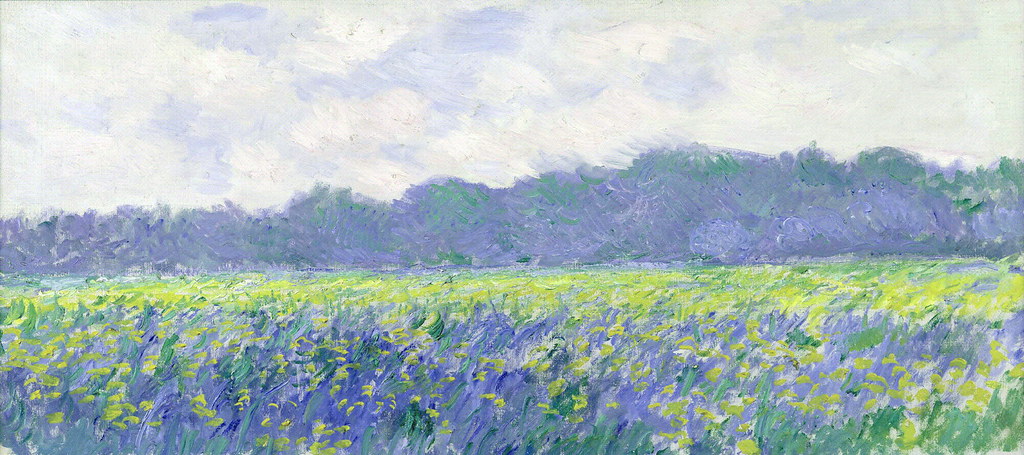
Claude Monet’s Champ d’iris à Giverny, painted in 1887 during a period of respite from the artist’s extensive travels in Holland, Brittany and, finally, his newly- established permanent studio at Giverny (estimate $3/5 million) . The idyllic , pastoral subject matter of this work encapsulates the central focus of Monet’s oeuvre toward the end of the 19 th century, when he divorced himself from painting urban scenes of Paris and devoted himself fully to his beloved countryside in Giverny.
The present work was acquired by the Mellons in 1953 and has remained in the family’s collection since .
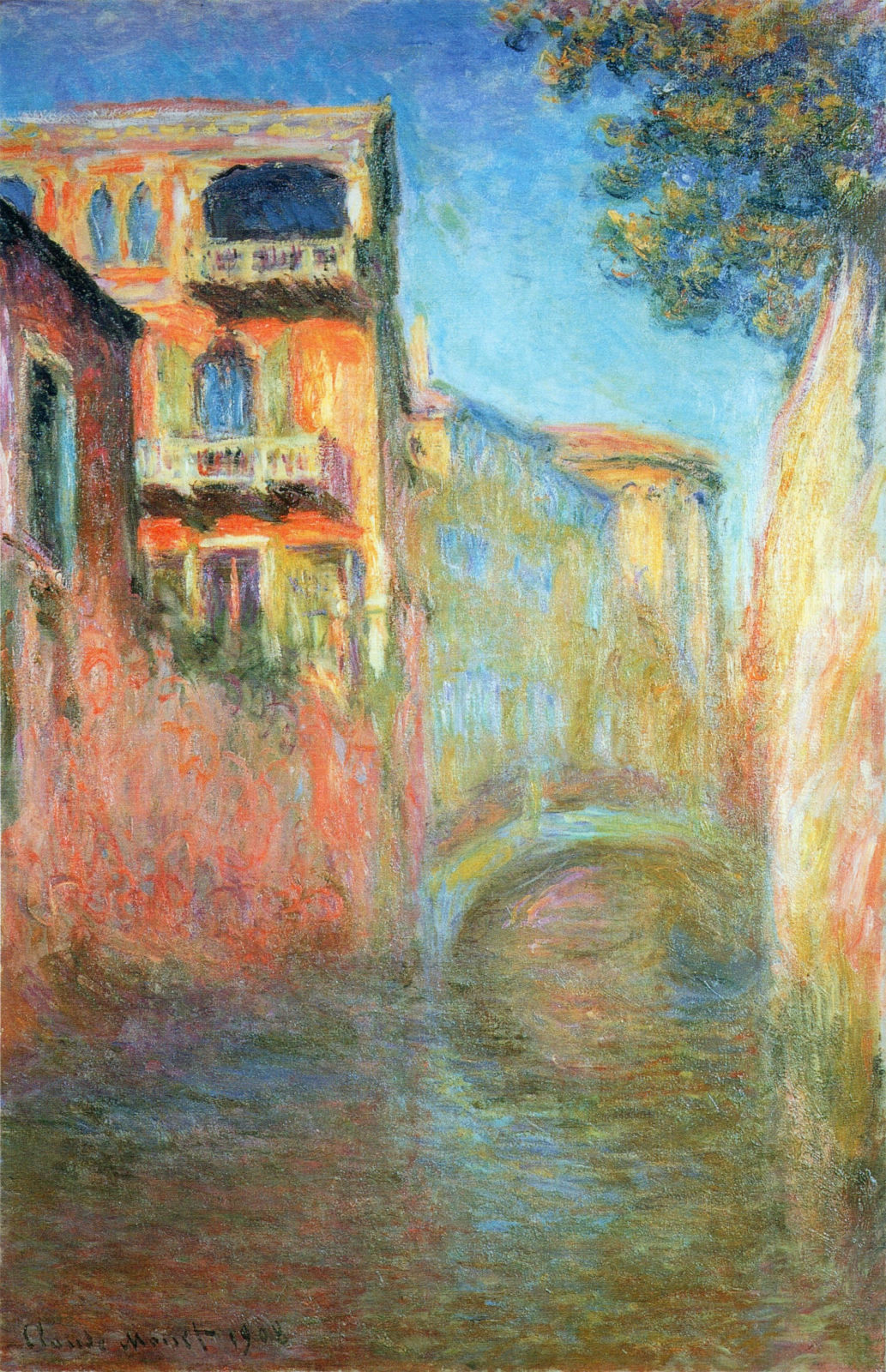
CLAUDE MONET (1840-1926)
Le Rio de la Salute,
oil on canvas, 32 x 25 in. Painted in 1908. Estimate: $7,000,000-10,000,000
Le Rio de la Salute,
oil on canvas, 32 x 25 in. Painted in 1908. Estimate: $7,000,000-10,000,000
MONET: FROM GIVERNY TO VÉTHEUIL
The selection of Impressionist pictures on offer this May are led by Claude Monet’s Le Bassin aux nymphéas, a powerful testament to the artist’s enduring creativity in his mature years (estimate $14/18 million). Monet’s paintings of his water lily pond at Giverny rank among the most celebrated Impressionist works. Painted circa 1917-20, Le Bassin aux nymphéas captures the famous pond that served as a boundless source of inspiration, providing the major themes that dominated his final decades. The enduring impact of these late paintings is evident in works of abstraction by artists including Jackson Pollock, Joan Mitchell and Gerhard Richter.
Monet’s Vétheuil is a stunning depiction of the artist’s hometown (estimate $4/6 million). This picturesque location was the site of some of Monet’s most successful Impressionist landscapes during this period, and continued to fascinate him well into his late career. Painted in 1880, the work has descended within the same family collection since 1914.
Painted in the immediate aftermath of the ground-breaking first Impressionist exhibition in 1874, Claude Monet’s Les Bords de la Seine au Petit-Gennevilliers (1874, estimate: £2,000,000-3,000,000) focuses on the idyllic, picturesque Parisian suburb of Petit-Gennevilliers, which sat on the opposite bank of the Seine to the artist’s adopted home of Argenteuil. Working alongside Pierre-Auguste Renoir and Édouard Manet, Monet produced a string of plein-air masterpieces over the course of this summer, inspired by the area’s timeless beauty, charming historical character, and lively nautical traffic that filled this stretch of the Seine. Focusing on the play of light, and the fleeting, ephemeral movement of the sky and river, the present composition is filled with swift, loose brushstrokes that convey a sense of the speed with which the artist rendered the scene, as he quickly translated the landscape as he saw it before him directly onto his canvas.
Le bassin aux nymphéas by Claude Monet (1840-1926) (estimate: $25,000,000-35,000,000) leads the sale and belongs to the artist’s most popular and arguably influential series, which lent inspriation to generations of subsequent artists in the twentieth century. This work is part of a sequence of 14 paintings that Monet most likely began in the spring or summer of 1918 and finished by late 1919, when he dated and sold the canvas to the Impressionist dealer Galerie Bernheim-Jeune in 1919. It was then bought by Henri Canonne, a Parisian pharmaceutical tycoon and major collector of Impressionism in 1928. Canonne owned more than forty paintings by Monet, including seventeen canvases from the Nymphéas series. The painting has been in the present collection for 20 years.
Monet’s Au Petit-Gennevilliers (estimate: $12,000,000-18,000,000), belongs to another celebrated series from Monet’s early career, when he painted various scenes of Argenteuil in 1874. The site itself is widely linked with the birth of Impressionist painting and provided endless inspiration for Monet and the other impressionists at that time. This painting will be on the market for the first time since 1899. It was purchased by the famed American collector Henry Osborne Havemeyer in 1901 and has remained in the family ever since.
Claude Monet’s Nymphéas are amongst the most iconic and celebrated Impressionist paintings. The profound impact these pictures have made on the evolution of Modern Art marks this series as Monet’s greatest achievement. The famous lily pond in his garden at Giverny provided the subject matter for most of his major late works. These spectacular canvases document the changes in his style and his constant pictorial innovations as he continued to paint this theme until his death in 1926. The present work dates from circa 1908 when he painted what are arguably the finest examples from the series. The canvas here is an extraordinary example of the artist's virtuosity as a colorist. The surface texture is rich with detail, particularly in the passages where the blossoms float atop the water. This distinction between reflection and surface, water and flora, and the general clarity of the scene are particularly striking in Monet's canvas here, and evidence its distinction as one of the most technically sophisticated of the entire series.
Mr. Koch’s Nymphéas was once in the prestigious Cannone Collection, formed by the Parisian pharmacist and industrialist Henri Canonne, where it remained with his family for over seven decades. Sotheby’s has sold 15 works by Monet to-date in 2015, which together have achieved $209 million. Those works were led by another example from the Nymphéas series from 1905, sold at Sotheby’s New York this May for $54 million.

